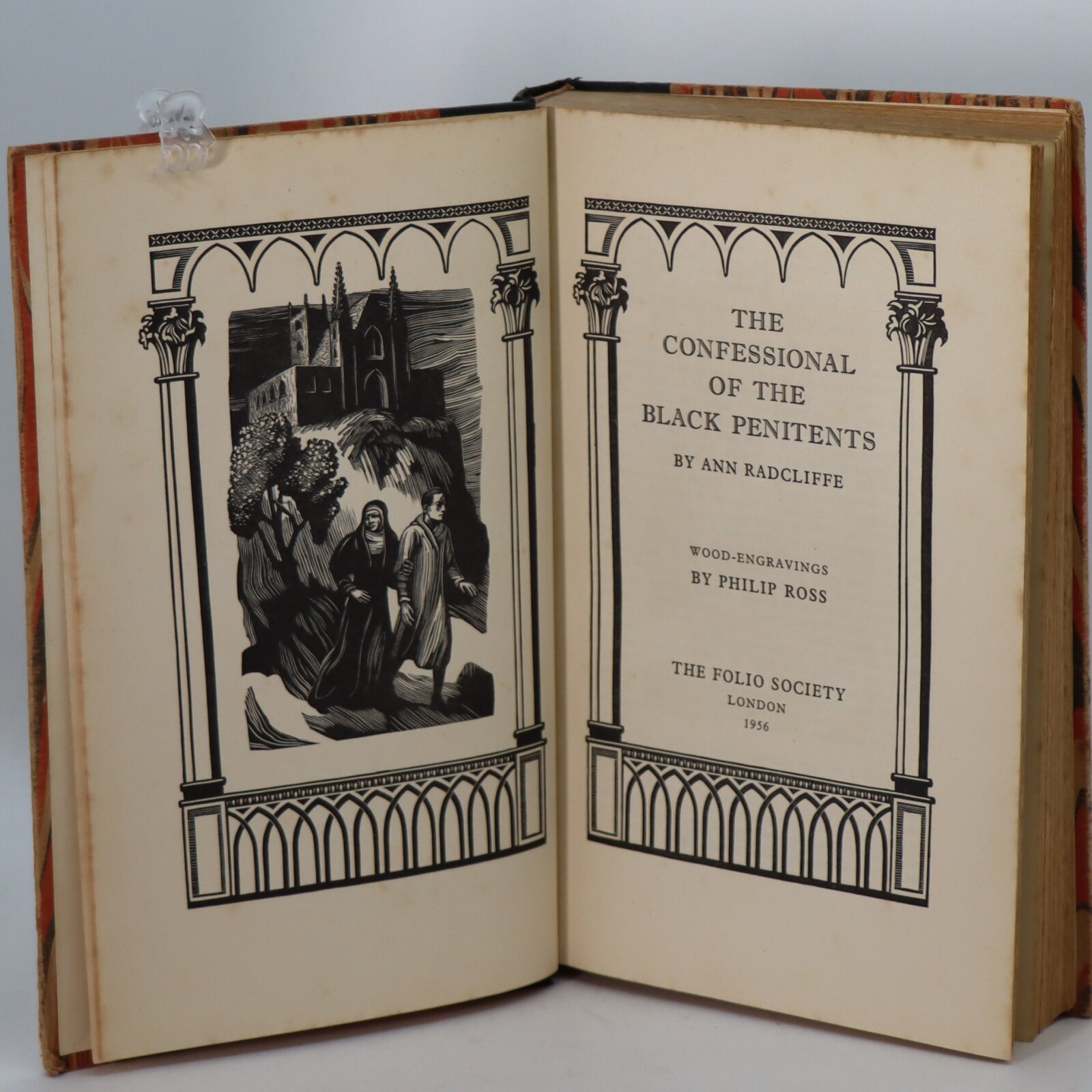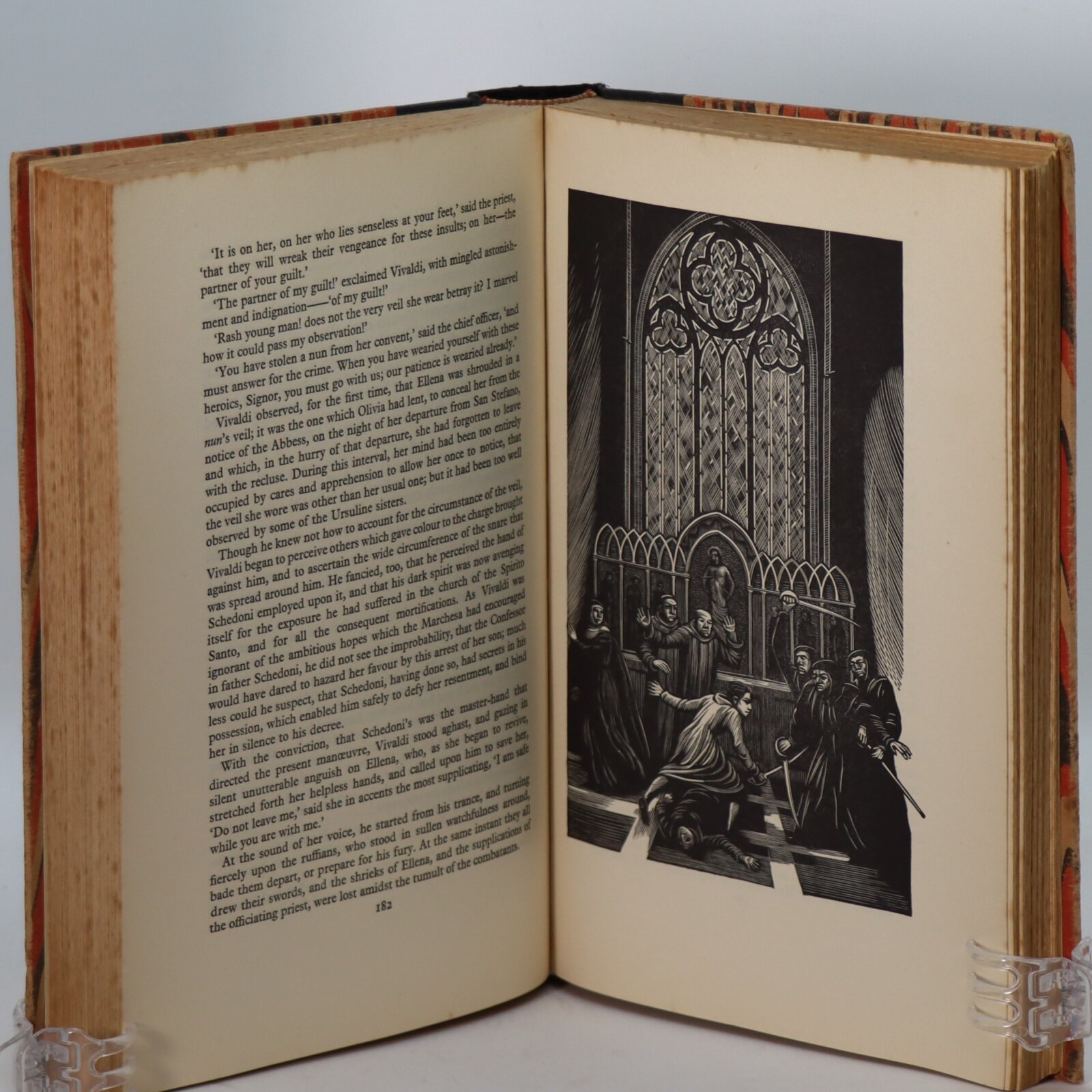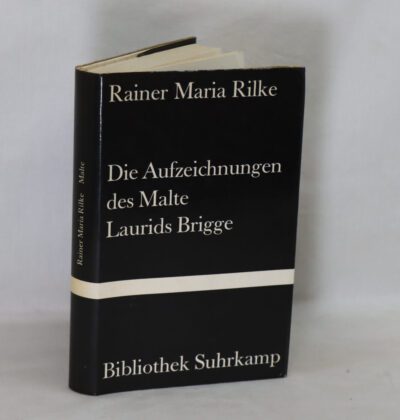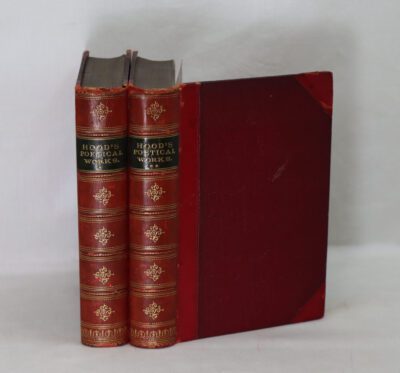The Confessional of The Black Penitents.
By Ann Radcliffe
Printed: 1956
Publisher: The Folio Society. London
| Dimensions | 16 × 23 × 4 cm |
|---|---|
| Language |
Language: English
Size (cminches): 16 x 23 x 4
Condition: Fine (See explanation of ratings)
Your items
Item information
Description
Black cloth spine with gilt title and decoration. Orange and black marbled boards.
F.B.A. provides an in-depth photographic presentation of this item to stimulate your feel and touch. More traditional book descriptions are immediately available.
A most thought provoking book
The Italian, or the Confessional of the Black Penitents (1797) is a Gothic novel written by the English author Ann Radcliffe. It is the last book Radcliffe published during her lifetime (although she would go on to write the novel Gaston de Blondeville, it was only published posthumously in 1826). The Italian has a dark, mysterious, and sombre tone which fixates on the themes of love, devotion, and persecution during the time period of Holy Inquisition. The novel deals with issues prevalent at the time of the French Revolution, such as religion, aristocracy, and nationality. Radcliffe’s renowned use of veiled imagery is considered to have reached its height of sophistication and complexity in The Italian; concealment and disguise are central motifs of the novel. In line with late 18th-century sensibility and its parallel fetishization of the sublime and the sentimentally pastoral, the heightened emotional states of Radcliffe’s characters are often reflected through the pathetic fallacy. The novel is noted for its extremely effective antagonist, Father Schedoni, who influenced the Byronic characters of Victorian literature.
Radcliffe influenced many later authors, both by inspiring more Gothic fiction and by inspiring parodies. In the eighteenth century, she inspired writers like Matthew Lewis (1775 – 1818) and the Marquis de Sade (1740–1814), who praised her work but produced more intensely violent fiction. Radcliffe is known for having spawned a large number of lesser imitators of the “Radcliffe School”, such as Harriet Lee and Catherine Cuthbertson. Jane Austen (1775 – 1817) defined her fiction as a contrast to Radcliffe and writers like her, especially in Northanger Abbey (1817), Austen’s parody of The Mysteries of Udolpho. Scholars have also perceived other apparent allusions to Radcliffe’s novels and life in Austen’s work.
In the early nineteenth century, Radcliffe influenced Edgar Allan Poe (1809–1849), and Sir Walter Scott (1771–1832). For example, Scott interspersed his work with poems in a similar manner to Radcliffe, and one assessment of her reads, “Scott himself said that her prose was poetry and her poetry was prose. She was, indeed, a prose poet, in both the best and the worst senses of the phrase. The romantic landscape, the background, is the best thing in all her books; the characters are two dimensional, the plots farfetched and improbable, with ‘elaboration of means and futility of result’.” Later in the nineteenth century, Charlotte and Emily Brontë continued Radcliffe’s Gothic tradition with their novels Jane Eyre, Villette, and Wuthering Heights.
Radcliffe was also admired by French authors like Honoré de Balzac (1799 – 1850), Victor Hugo (1802 – 1885), Alexandre Dumas (1802 – 1870), and Charles Baudelaire (1821 – 1867). Honoré de Balzac’s novel of the supernatural L’Héritière de Birague (1822) follows the tradition of Radcliffe’s style and parodies it.
As a child the young Fyodor Dostoyevsky was deeply impressed by Radcliffe. In Winter Notes on Summer Impressions (1863) he writes, “I used to spend the long winter hours before bed listening (for I could not yet read), agape with ecstasy and terror, as my parents read aloud to me from the novels of Ann Radcliffe. Then I would rave deliriously about them in my sleep.” A number of scholars have noted elements of Gothic literature in Dostoyevsky’s novels, and some have tried to show direct influence of Radcliffe’s work.
In 1875, Paul Féval wrote a story starring Radcliffe as a vampire hunter, titled La Ville Vampire: Adventure Incroyable de Madame Anne Radcliffe (“City of Vampires: The Incredible Adventure of Mrs. Anne Radcliffe”), which blends fiction and history. At the last minute a mysterious man on a white horse saves the day, none other than Lord Wellington fresh from the Battle of Waterloo.
Want to know more about this item?
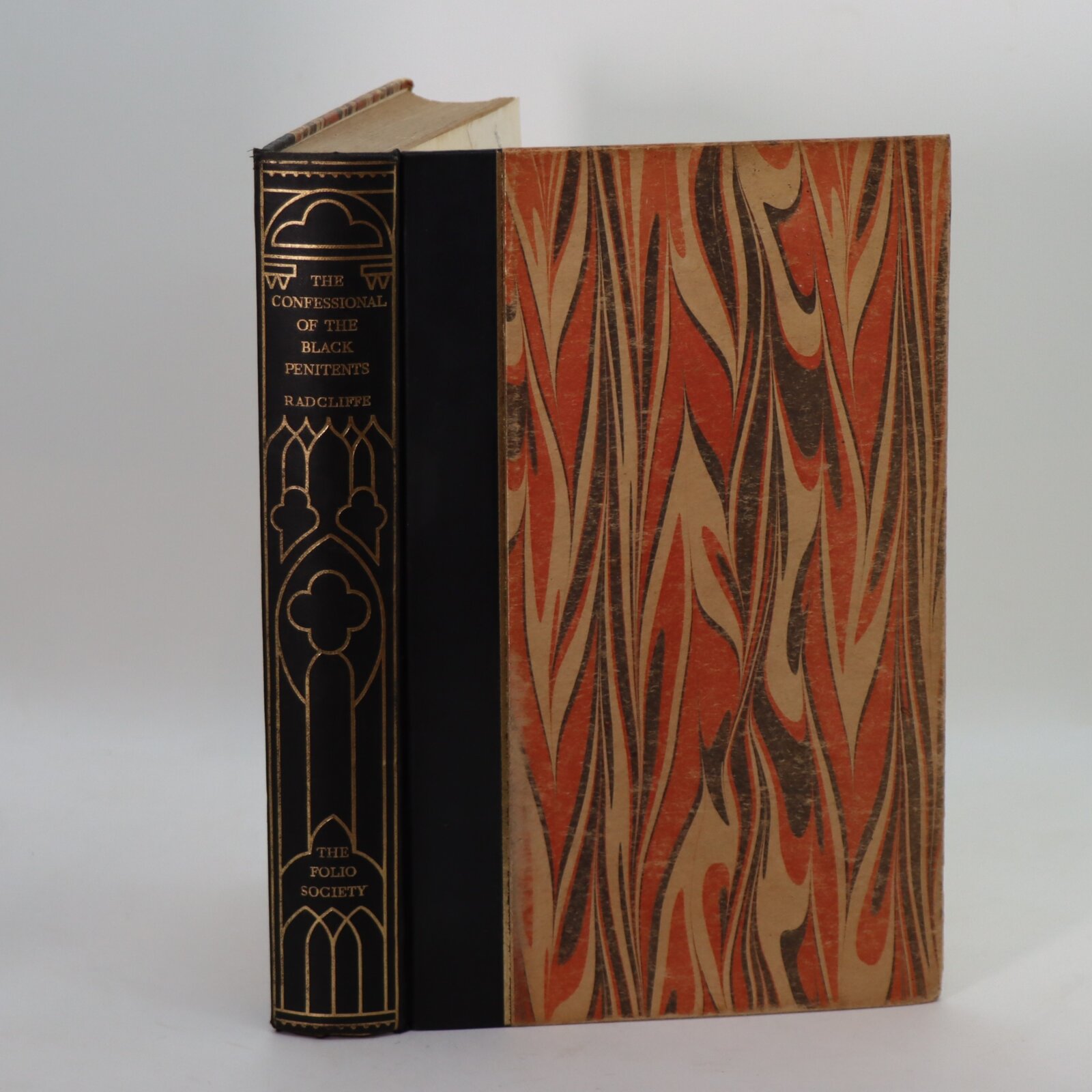
Related products
Share this Page with a friend

